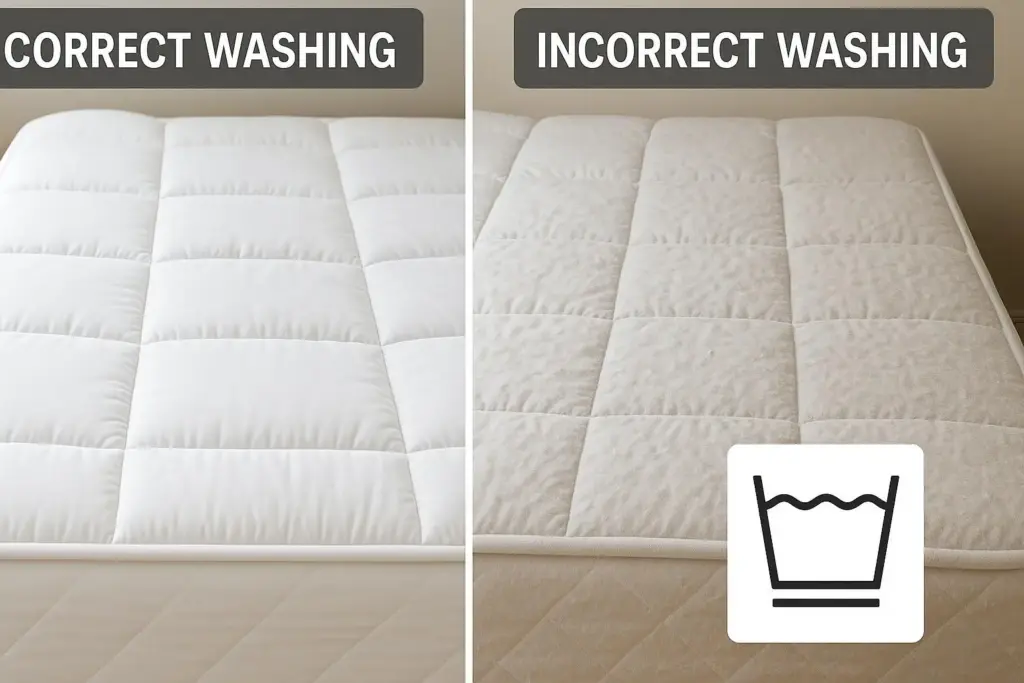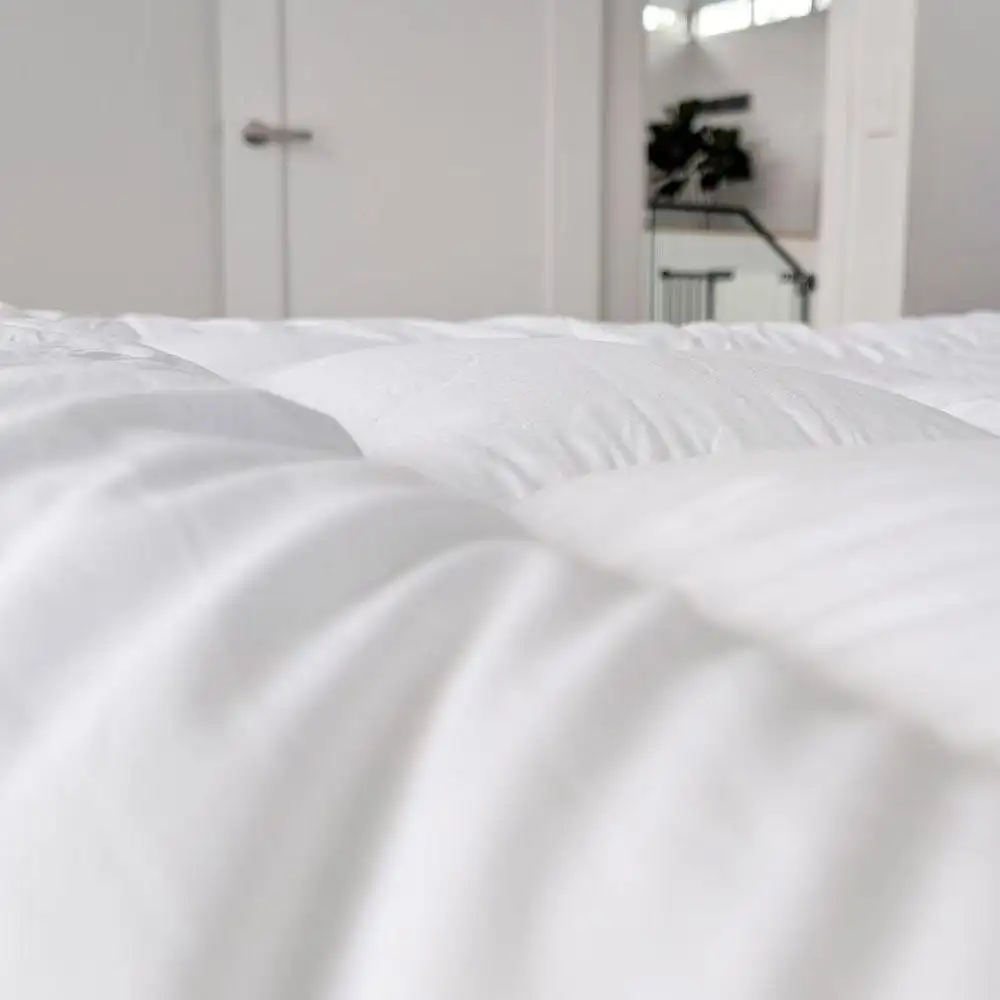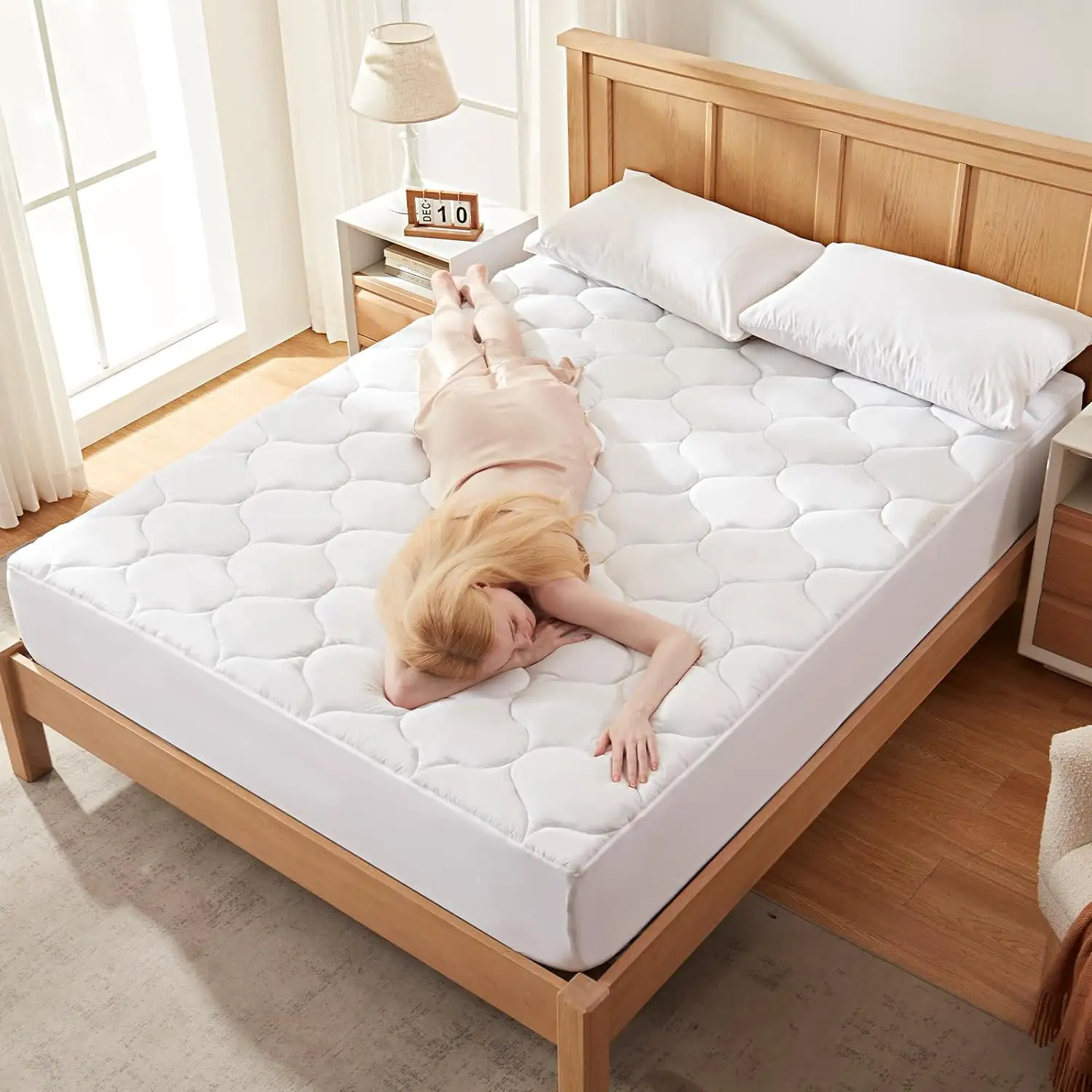Mattress pads are essential for extending mattress life, enhancing comfort, and improving hygiene. However, improper washing or drying methods can cause pilling—a buildup of small fabric balls that reduce softness and impair product longevity. For hospitality managers, bedding retailers, or discerning consumers, mastering proper mattress pad care is a simple but high-return investment.
Why Do Mattress Pads Pill?
Pilling occurs when fibers in the fabric rub together and break, forming tiny balls. This is often the result of:
- Aggressive washing cycles
- High-temperature drying
- Low-quality or mixed-fiber construction
- Incorrect detergents
While some fabrics are more pill-resistant (such as brushed microfiber or tightly woven cotton), all materials can pill over time without proper care.
Step-by-Step: How to Wash Mattress Pads Without Causing Pilling

1. Check the Label First
Each mattress pad comes with specific care instructions. Always review the care label before proceeding.
2. Use a Gentle Cycle with Cold Water
Avoid hot water, which can weaken fibers. Instead:
- Set your washer to cold or warm, not hot.
- Select a gentle or delicate cycle to minimize agitation.
3. Choose the Right Detergent
Use a mild, liquid detergent that’s free of bleach, enzymes, or brighteners. Harsh chemicals accelerate fiber breakdown and promote pilling.
4. Avoid Overloading the Machine
Overcrowding causes excessive friction. Wash your mattress pad alone or with similarly soft items like sheets or pillowcases.
Best Practices for Drying Mattress Pads
1. Tumble Dry Low or Air Dry
High heat damages fibers and leads to pilling. Instead:
- Tumble dry on low heat, or
- Line dry in a shaded, well-ventilated area to protect elasticity and texture.
2. Skip Dryer Sheets
Fabric softeners or dryer sheets can leave residues that break down fibers over time. If softness is a concern, add wool dryer balls to the cycle.
3. Do Not Iron
Heat from ironing can melt synthetic fibers and trigger pilling.

relation product:Quilted Soft Mattress Pad Down Alternative Fill Mattress Topper
Long-Term Care Tips
- Wash every 2–3 months or as needed to reduce wear and tear.
- Use a mattress protector over the pad for an additional layer of protection.
- Rotate or flip your mattress pad occasionally to distribute pressure evenly.
Final Thoughts
Pilling is not inevitable. With the right washing and drying methods, your mattress pads can maintain their comfort, cleanliness, and professional appearance for much longer. This is especially critical for hospitality businesses where guest experience and material durability are both non-negotiable.
For retailers and manufacturers, educating end users on care best practices not only improves customer satisfaction but also reinforces product value.


Leave a Reply